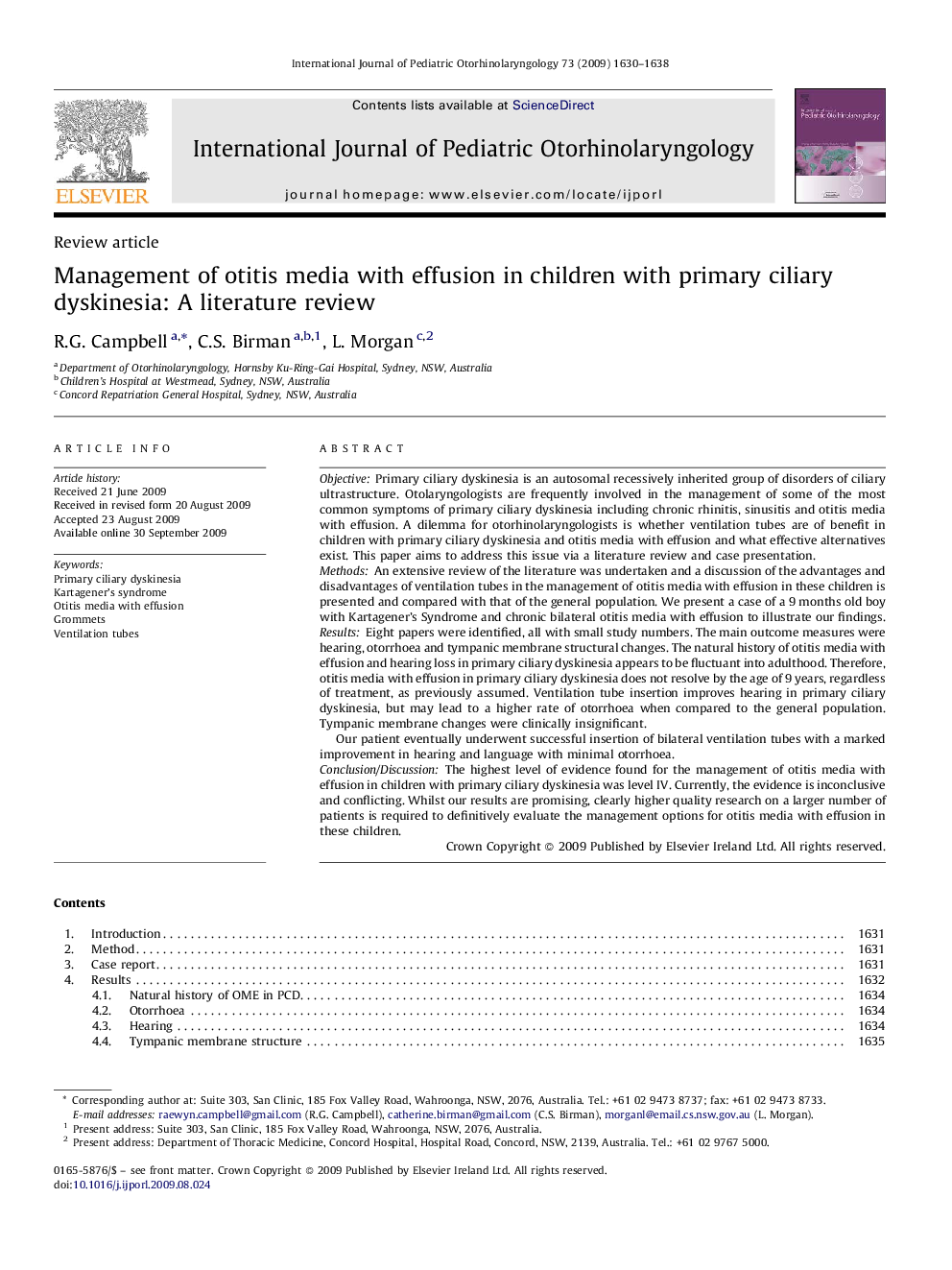| Article ID | Journal | Published Year | Pages | File Type |
|---|---|---|---|---|
| 4114784 | International Journal of Pediatric Otorhinolaryngology | 2009 | 9 Pages |
ObjectivePrimary ciliary dyskinesia is an autosomal recessively inherited group of disorders of ciliary ultrastructure. Otolaryngologists are frequently involved in the management of some of the most common symptoms of primary ciliary dyskinesia including chronic rhinitis, sinusitis and otitis media with effusion. A dilemma for otorhinolaryngologists is whether ventilation tubes are of benefit in children with primary ciliary dyskinesia and otitis media with effusion and what effective alternatives exist. This paper aims to address this issue via a literature review and case presentation.MethodsAn extensive review of the literature was undertaken and a discussion of the advantages and disadvantages of ventilation tubes in the management of otitis media with effusion in these children is presented and compared with that of the general population. We present a case of a 9 months old boy with Kartagener's Syndrome and chronic bilateral otitis media with effusion to illustrate our findings.ResultsEight papers were identified, all with small study numbers. The main outcome measures were hearing, otorrhoea and tympanic membrane structural changes. The natural history of otitis media with effusion and hearing loss in primary ciliary dyskinesia appears to be fluctuant into adulthood. Therefore, otitis media with effusion in primary ciliary dyskinesia does not resolve by the age of 9 years, regardless of treatment, as previously assumed. Ventilation tube insertion improves hearing in primary ciliary dyskinesia, but may lead to a higher rate of otorrhoea when compared to the general population. Tympanic membrane changes were clinically insignificant.Our patient eventually underwent successful insertion of bilateral ventilation tubes with a marked improvement in hearing and language with minimal otorrhoea.Conclusion/DiscussionThe highest level of evidence found for the management of otitis media with effusion in children with primary ciliary dyskinesia was level IV. Currently, the evidence is inconclusive and conflicting. Whilst our results are promising, clearly higher quality research on a larger number of patients is required to definitively evaluate the management options for otitis media with effusion in these children.
